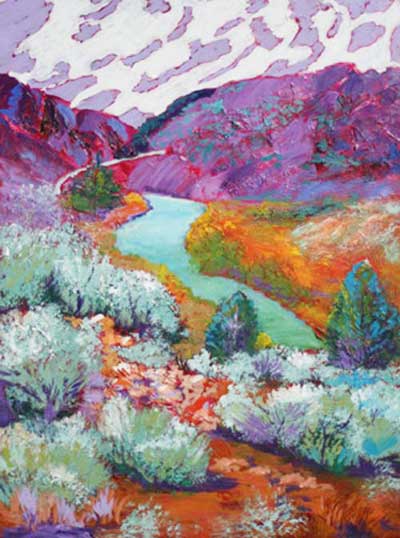
Last week I encouraged you to experiment with acrylic mediums to add texture to your paintings. The dictionary defines texture as “the characteristic visual and tactile quality of the surface of a work of art resulting from the way in which the materials are used.”
With the wide variety of mediums available, it is easy to make surfaces rough, wavy, crackled, gritty, peaked, or stringy. You may even get going with the palette knife and pastry spreader, gluing sand and paper with abandon until, suddenly, oh my, it’s a big lumpy mess!
Yes, it’s easy to get carried away. Too much texture can be as much of a challenge as not enough. When you are painting, keep in mind that smooth and glassy are textures, too. Smooth areas contrast with the rougher areas and give your eye a quiet area a place to rest within the painting.
But don’t despair if you’ve gone too far! The good thing about acrylics is that they can be applied in many layers. If you want to bring back a smooth surface, lay your painting flat and pour on a a liquid medium or a self-leveling clear gel. Let it dry, and apply more layers as needed to smooth out the area. Once you have reestablished a smooth surface, you can continue painting or leave some of the clear layer showing to add visual depth.
Are you experimenting with texture? Post what you are learning in the comments below.